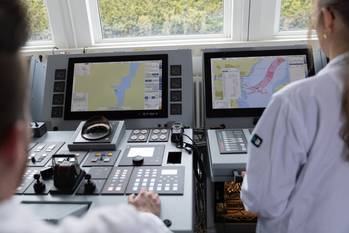Port Authority
A port authority operates ports and other transportation infrastructure for a special-purpose district. Whether operated directly by the government or in cooperation with government agencies, North American port authorities are public entities and are governed by a board or commission. Most port authorities are financially autonomous. Port districts may also operate shipping terminals, airports, railroads, and irrigation facilities. The port authority often owns land, dictates fees, and collects taxes.

Tugs Assisting Turkish Tanker Off Senegal
Senegalese authorities are racing to prevent a potential oil spill after water entered…

Brazil Prosecutors Sue Over Livestock Carrier Shipwreck
Brazilian federal prosecutors in Para state have filed a lawsuit to demand the removal of the hull a

Singapore to Bunker Methanol Next Year
The Maritime and Port Authority of Singapore (MPA) will issue licenses to supply…

Fincantieri Launches €40M Shipyard Expansion Plan
Fincantieri has finalized a multi-decade concession agreement that will reshape its…

No Injuries Reported as Ferry and Tanker Collide Off Singapore
A Singapore-registered passenger ferry and a Marshall Islands-registered tanker collided…

MPA and RINA Sign Digitalization MoU
The Maritime and Port Authority of Singapore (MPA) and class society RINA have signed…

Two Missing After Collision Off Guangzhou
A Singapore-registered container ship, Wan Hai A17, collided with a Chinese-registered bulk carrier…

Fratelli Cosulich Group Launches New Chemical Bunker Tanker
On October 9, 2025, the Fratelli Cosulich Group launched Maya Cosulich — the world’s…

Singapore Evaluates Ammonia Bunkering Solution
A consortium led by Keppel Ltd. has been appointed by the Energy Market Authority…

Ulsan Port Completes Its First Green Methanol STS Bunkering for Bulk Carrier
Ulsan Port Authority (UPA) has completed Korea’s first methanol bunkering for a dual…

Hybrid Patrol Boats Offer More than Emissions Savings
Interest in hybrid government and patrol boats is growing as boat builders demonstrate…

China's Hold on Global Ports focus of Trump Administration
U.S. President Donald Trump's administration is on a mission to weaken China's global…
The global maritime industry is under immense pressure to meet ambitious climate targets, spearheaded by the International Maritime Organization (IMO)'s strategy to reach net-zero emissions by or around 2050. This mandate has triggered the most significant technological and financial upheaval the sector has ever faced. This article explores the core challenge—the decarbonization dilemma—focusing on the complex regulatory landscape (CII, ETS) and the intense, multi-fuel race to find viable, scalable, and safe "green fuels." We analyze the leading contenders—ammonia, methanol, and hydrogen—highlighting their pros, cons, and the colossal infrastructure investment required to power the future of global shipping.
The vast, open oceans have long served as conduits for commerce, adventure, and exploration. However, along with the grandeur of maritime activities comes inherent risks, one of which is the specter of armed robbery at sea. Also known broadly as maritime piracy, this menacing threat envelops not just the economic marine highway but also the lives and safety of those who navigate it.
Navy Welcomes 17th Master Chief Petty Officer of the Navy, John PerrymanThe U.S. Navy officially welcomed John Perryman as its 17th Master Chief Petty Officer of the Navy (MCPON), the highest enlisted position. The ceremony held at the United States Navy Memorial in Washington…

Cutting-Edge Electric Propulsion for Container ShipsHD Korea Shipbuilding & Offshore Engineering and HD Hyundai Heavy Industries received Approval in Principle (AIP) from ABS for a concept design of a 16,000 TEU container ship featuring an electric propulsion system.
A winch is a mechanism used to reel in, to let out, or otherwise adjust the tension of a rope, wire, or cable. Boats and ships make use of multiple winches to handle halyards, sheets, as well as anchor or mooring lines. The basic mechanism consists…














